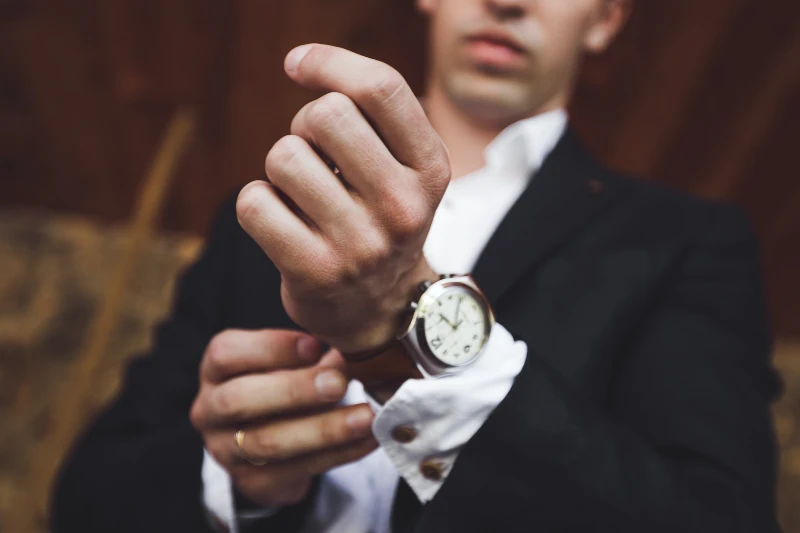Do you want to dress like a millionaire without actually having a millionaire’s bank account? The ‘Old Money’ aesthetic might be your key to achieving that sophisticated look that whispers wealth instead of shouting it.
This style isn’t about flashy labels or the latest trends, it’s rooted in a timeless approach to fashion that has been passed down through generations of well-to-do families.
Let’s go into the world of old money fashion and see how you can add a touch of understated luxury to your wardrobe.
What Is Old Money Aesthetic?
The Old Money aesthetic is an embodiment of grace, elegance, and an understated approach to fashion. It is the style associated with families who have been wealthy for generations and have an established sense of propriety and sophistication.
This sartorial approach is less about the latest trends and brand names and more about quality, durability, and timeless design.
The essential notion here is one of heritage and discreet affluence. When you see someone who embodies this look, they exude comfort and confidence without the need for showy or opulent attire.
The clothes worn within the Old Money aesthetic are usually tailor-made, of premium fabrics, and in neutral or pastel color palettes. More than just clothes, it’s a lifestyle that focuses on.
How to Dress Like Old Money For Men
When you’re aiming to capture the Old Money aesthetic, it’s not enough to just mirror the look; understanding and embracing the philosophy behind it is essential.
This philosophy isn’t spoken, but it’s demonstrated through a series of unwritten rules that guide how those with established wealth present themselves through their wardrobe.
1. Invest in Quality Over Quantity
People with old money tend to choose their wardrobe pieces meticulously. It’s not about having a closet overflowing with clothes. The key is to select items with impeccable craftsmanship and made from superior materials like wool, cashmere, or Egyptian cotton.
These pieces will not only look more refined but they will last for years, often improving with age like a fine wine. When buying, think of each piece as an investment—something that could be passed down rather than replaced.
2. Timeless Over Trendy
The allure of the ‘latest fashion’ has no place in the Old Money wardrobe. Here, fashion is transcendent, unaffected by whims and fads. Every piece should feel as at home in your closet now as it would decades prior.
Classic items like a well-fitted blazer, a crisp button-up shirt, or a timeless pair of leather oxfords are staples that defy the ebb and flow of trends. Think of icons like Cary Grant or modern-day figures such as Prince Charles—figures who are celebrated for their consistently classic style choices.
3. Understated Elegance
Elegance doesn’t scream for attention; it confidently whispers. When dressing rich, the goal is to embody sophistication without the trappings of gaudy accessories or logos.
Everything should fit impeccably, as tailoring is an essential aspect of the Old Money look. The clothes should highlight your best features modestly, making you look polished without appearing as though you’re trying too hard.
4. Color and Pattern Coordination
Marrying colors and patterns with subtlety is an art in itself. The Old Money aesthetic prefers a palette that is easy on the eyes, favoring navy, olive, camel, burgundy, and other earth tones.
When patterns are present, they’re classic—think pinstripes on a suit, a tartan on a winter scarf, or florals on a tie. The key is to coordinate without creating a clash, blending patterns and colors in a way that is visually harmonious and subtly sophisticated.
The Upper Echelon of Men’s Attire
Dressing with the Old Money aesthetic involves a keen selection of clothing items that are
as much about functionality and comfort as they are about style. Here’s a deep dive into the essential components of the Old Money wardrobe, from top to bottom.
Tailored Suits: The Foundation of Formality
A well-tailored suit is the bedrock of an Old Money gentleman’s wardrobe. Opt for high-quality fabrics like wool, tweed, or cashmere blends. The fit should be precise, contouring to your body without restricting movement.
Classic colors like navy, charcoal, and dark green are excellent choices. Brands with a long heritage of craftsmanship, such as Brooks Brothers or Savile Row houses, are preferred over trendy designers.
Iconic Outerwear: Time-Honored and Functional
Whether it’s a trench coat, a waxed jacket, or a wool overcoat, Old Money outerwear stands the test of time. These pieces are chosen for their functionality as well as their timeless appeal. Brands like Burberry for trench coats or Barbour for waxed cotton jackets have a rich history and a reputation for enduring style.
Shirts and Knitwear: The Plush Comforts
Quality dress shirts in white, blue, or subtle stripes are essential. Look for 100% cotton with a nice hand feel. When it comes to knitwear, materials like pure lambswool, merino, or cashmere speak to luxury without being ostentatious.
Cable knits, V-necks, and cardigans in neutral colors provide layering options for colder months. Brands like L.L. Bean, Ralph Lauren, and Loro Piana are renowned for offering classic knitwear that fits this aesthetic.
Trousers: A Mixture of Practicality and Refinement
When it’s not a suit occasion, the right pair of trousers can still uphold the Old Money aesthetic. Chinos in shades like khaki, navy, or British tan are versatile for semi-formal settings.
During leisure time, tailored shorts or well-fitted denim (preferably in a dark, even wash without distressing) are acceptable. Wool trousers with a slight break at the shoe keep the look sharp in professional or formal environments.
Footwear: The Polished Finish
Your shoes can say a lot about your approach to the finer details. A pair of Oxfords, brogues, or loafers in high-quality leather or suede adds a polished finish to any outfit.
Footwear should be well-maintained; regular polishing and proper storage are non-negotiable for conveying that Old Money sensibility.
Investing in traditional brands like Allen Edmonds, Church’s, or Alden suggests a commitment to heritage and quality construction. For casual settings, leather driving shoes or minimalist white sneakers that are clean and free from branding align well with the aesthetic.
Accessories: The Subtle Accents
Accessories are the nuanced touchpoints that add personal flair while maintaining the Old Money penchant for restraint. Leather belts should match the tone of your shoes and be free from oversized buckles or logos.
Ties favor traditional stripes, dots, or club patterns and are often made of silk. A wristwatch should be classic and elegant; it’s not uncommon for Old Money individuals to wear a family heirloom or a timepiece with a story rather than a flashy contemporary piece.
And when it comes to bags—from briefcases to weekenders—quality leather or canvas products from heritage brands are the go-to.
Grooming: Clean and Conservative
As with clothing, grooming in the Old Money aesthetic is conservative and neat. Hair is kept clean-cut and styled subtly. Facial hair, if present, is well-trimmed.
Personal hygiene is paramount, and any cologne or fragrance used is light and traditional—nothing overpowering or trendy.
Embody the Old Money Aesthetic
Embracing the Old Money aesthetic extends beyond clothing choices to embodying a lifestyle and attitude grounded in subtle displays of wealth and understated confidence. Here is how to fully encapsulate the essence of Old Money in your presentation and deportment.
Manners and Etiquette: Reflecting Your Upbringing
The Old Money aesthetic is as much about behavior as it is about fashion. Good manners and proper etiquette are seen as reflections of one’s upbringing and education.
This means being courteous, articulate, and possessing a poised demeanor in all situations. These qualities complement the wardrobe choices and project an air of authenticity.
Posture and Body Language: The Silent Communicators
Your posture speaks volumes before you even say a word. Standing tall with your shoulders back and maintaining a relaxed, but commanding presence can give off an Old Money vibe.
A firm handshake, eye contact, and a calm, assured body language are important to match your attire with the gravitas it deserves.
Social and Cultural Engagement: Being Well-versed
A depth of knowledge in cultural and social affairs is often associated with the Old Money lifestyle.
Being well-read, appreciating the arts, and showing an understanding of global issues reflect the cultured life someone from an Old Money background is expected to lead.
Engage in conversation with awareness and an informed perspective. This doesn’t mean you need to be a walking encyclopedia, but rather that you show an appreciation for the finer aspects of life and demonstrate a certain level of intellectual curiosity.
Philanthropy and Legacy: The Spirit of Generosity
The Old Money ethos typically involves a commitment to philanthropy and community service. Whether it’s contributing to charities, participating in local events, or supporting the arts, these actions underscore the responsibility to give back and maintain a legacy.
For those emulating Old Money, it’s not about public recognition, but rather genuine contribution and the continuation of values.
Lifestyle Choices: Discretion and Quality
Finally, your overall lifestyle choices should mirror the quality and discretion that you showcase in your dressing.
This might translate into favoring classic modes of transport, like vintage sports cars or sailing, partaking in traditional sports such as golf or polo, and choosing holiday destinations that are known for their natural beauty or cultural heritage rather than their trendiness.
Craft Your Old Money Wardrobe
Building an Old Money wardrobe calls for strategic choices and thoughtful investments. It’s not about creating a look for a day but establishing a lifetime’s worth of style.
Build from the Basics
Start assembling your Old Money wardrobe by investing in the basics that form the foundation. A few well-fitted blazers, tailored chinos, crisp white shirts, and resilient oxford shoes are non-negotiables.
These are items you’ll reach for time and again, and they can be mixed and matched to create a variety of classic looks.
Consider Fabric and Seasonality
When selecting garments, pay special attention to the fabric. Natural fibers like wool, silk, and cotton not only breathe better but also tend to last longer and look more luxurious.
Also, be mindful of seasonality in your attire. Linen and lightweight cotton are perfect for summer, while wool, tweed, and heavier knits are ideal for the colder months.
Detailed Tailoring
It cannot be overstated how important tailoring is to achieving the Old Money aesthetic. Even the finest pieces can look subpar if they don’t fit properly.
Find a skilled tailor who can adjust off-the-rack items to fit as if they were custom-made for your body. This applies to suits, trousers, and even shirts.
Balance the Wardrobe
Vary your wardrobe between formal and casual. While a suit is paramount for formal occasions, polo shirts, well-mainted sweaters, and classic tees in high-quality fabrics are essential for more casual settings. However, ensure that casual doesn’t slip into unkempt or sloppy. Every item, no matter how casual, should be in good condition and fit well.
The Art of Accessorizing
Accessories are the final touches that can make an outfit truly shine. A silk pocket square, a pair of cufflinks, a tasteful watch, or a subtly patterned necktie can elevate your ensemble. Remember, in the Old Money world, less is more. Your accessories should complement and enhance your outfit, not overpower it.
Curation over Accumulation
Instead of constantly adding to your wardrobe, curate it. Periodically assess your clothing and accessories, keeping only the items that fit, are in good condition, and align with the Old Money aesthetic. This might mean letting go of pieces that are outdated, worn out, or simply don’t work with the rest of your wardrobe. As you can understand, a few high-quality items are better than numerous average ones.
Conclusion
Step into the world of Old Money style with self-assurance, knowing that you’re not just wearing clothes, you’re wearing a century-old narrative of sophistication, class, and timeless style. Welcome to a life dressed in richness, not just in material, but in heritage and character.





